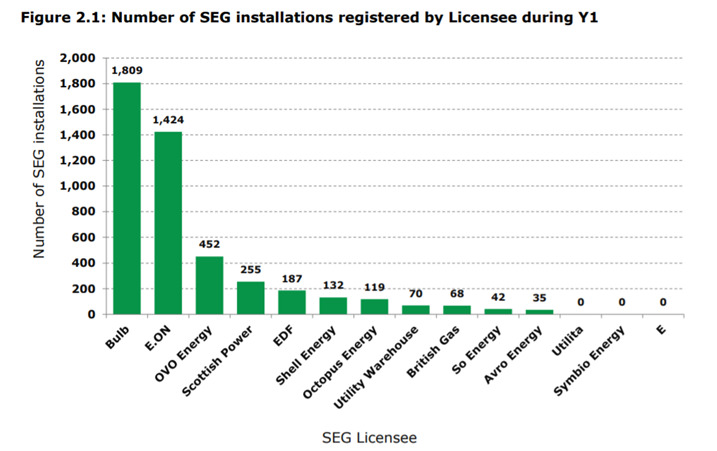
A total of 2,568,810kWh of low carbon electricity was exported via the SEG in the first year. Image: Maria Godfrida (Pixabay).
Solar PV made up around 99.8% of all installations registered with the Smart Export Guarantee (SEG) in its first fifteen months of operations.
This is according to Ofgem’s first annual report, detailing the tariffs on offer, technology signed up and payments made from 1 January 2020 – when the scheme launched as a replacement to the small-scale feed-in tariff – to 31 March 2021.
A total of 4,593 generators signed up to one of the available tariffs, with 2,568,810kWh of low carbon electricity exported and payments of £114,480.37 made.
Solar PV made up all but one of the installations, with one micro-combined heat and power installation joining an SEG tariff. No wind, hydro or anaerobic digestion installations joined in the first year of the SEG.
The vast majority (98.95%) of installations had a capacity of less than or equal to 10kW, with £105,124.37 (91.83%) of payments going to solar PV installations in this range.

Solar PV installations registered to the SEG by capacity. Image: Ofgem.
A total of 3,005 installations received payment for their exported electricity by the end of the reporting period, with a further 22 having exported but not yet receiving payment. The regulator suggested this could be due to their chosen supplier’s tariff terms, with the result that their SEG payments will be made during the second year. Meanwhile, 1,566 had not yet reported any export.
Of the 4,593 installations registered into an SEG tariff, the vast majority (70%) were registered to two suppliers. Bulb saw 1,809 registrations, while E.ON saw 1,424. The two also offered the two highest tariffs available during the year of suppliers who were either required to be SEG licensees or voluntarily became licensees, Ofgem said.
Conversely, Utilita, Symbio Energy and E registered no SEG installations during the first year.

Number of SEG registrations for each licensee. Image: Ofgem.
Twenty-one tariffs were offered throughout the year, six of which stopped being available to generators before the end of the year and fifteen of which remained ongoing. Ofgem did note that EDF’s Export + Earn tariff decreased from 3.5p/kWh to 1.5p/kWh as of 1 November 2020.
It also detailed a variety of instances of non-compliance from suppliers during the first year of the SEG’s operation. It said that one supplier didn’t have the suitable arrangements in place to be able to settle export half-hourly for SEG generators, however the supplier reported the issue to Ofgem and engaged constructively to ensure a timely resolution and bring themselves into compliance.
Another SEG licensee – which Ofgem did not name – did not offer an SEG tariff or publish their SEG status on their website until 12 March 2021. Ofgem said that SEG licensees must publish their status and rates so this information is easily accessible to the public, and that while there is no set deadline for this, there is a requirement that licensees must cooperate to contribute to the full and timely implementation of the SEG.
As such, this licensee failed to meet Ofgem’s expectations with regard to these requirements and has consequently been added to the Supplier Performance Report for this non-compliance.
A study published in July detailed how changes to the SEG could boost PV ownership, including increasing awareness of the scheme, setting a higher minimal rate of return and introducing fixed rather than variable tariffs for a limited adoption period. Conducted by Basis Social on behalf of the Department for Business, Energy and Industrial Strategy, the study found that while uptake of the SEG is likely to be high among new solar panel owners, the variable structure makes it less of an incentive to install compared with the feed-in tariffs, which had guaranteed payments.

